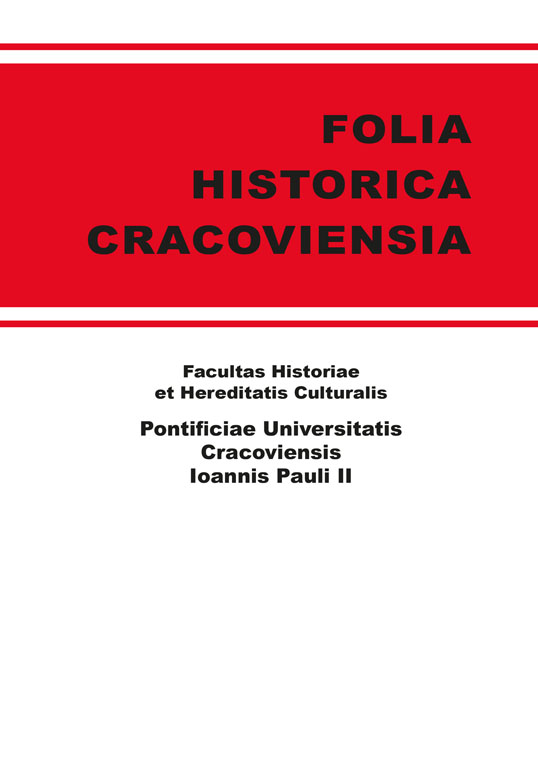Architektura i wyposażenie kościoła i klasztoru Karmelitów bosych w Wiśniczu
DOI:
https://doi.org/10.15633/fhc.234Słowa kluczowe:
architektura, doba wczesnonowożytna, zakon karmelitów, NowyWiśniczAbstrakt
Ufundowany w Wiśniczu przez Stanisława Lubomirskiego (1582–1649) kościół Chrystusa Salwatora i klasztor Karmelitów bosych był dziękczynnym votum za zwycięstwo odniesione pod Chocimiem oraz szczęśliwe zakończenie wojny polsko-tureckiej w 1621 roku. Założenie klasztorne zostało wzniesione opodal rodowego zamku Lubomirskich w Wiśniczu wg planów Macieja Trapoli w latach 1622–1635. Konsekrowany 1 lipca 1635 roku kościół klasztorny pod wezwaniem Chrystusa Salwatora otrzymał bardzo bogate wyposażenie, podobnie jak i sam klasztor. Kościół wzniesiony wg reguł zakonu karmelitańskiego był budowlą murowaną, na rzucie krzyża łacińskiego, o zwróconym na południe dwuprzęsłowym prezbiterium oraz jednonawowym, także dwuprzęsłowym korpusie, otoczonym po bokach rzędem kaplic bocznych, połączonych ze sobą wąskimi przejściami i otwartych do głównej nawy arkadami ujętymi w archiwolty, wspartymi na filarach. Wnętrze ozdobiono bogatą dekoracją stiukową, wykonaną przez Jana Chrzciciela Falconiego, skomponowaną między innymi z panopliów o motywach tureckich, co bezpośrednio nawiązywało do zwycięstwa chocimskiego. Pod ramionami transeptu urządzono rodowe mauzoleum Lubomirskich z ołtarzem Ukrzyżowania. Niestety w wyniku zawieruch dziejowych nie przetrwało ani bogate wyposażenie kościoła, ani sama świątynia, zburzona przez niemieckiego okupanta w latach 1940–1942. Przylegający do kościoła od strony południowej i zachodniej klasztor był budowlą podpiwniczoną i murowaną. Wzniesiono go w stylu wczesnobarokowym na planie regularnego czworoboku o wymiarach 61 × 62 m, z trzema dziedzińcami wewnętrznymi i wnętrzami sklepionymi kolebkowo i krzyżowo. Budynek klasztoru po kasacie zakonu przez cesarza Józefa II w 1783 roku został zamieniony na więzienie.
Pobrania
Opublikowane
Numer
Dział
Licencja
Prawa autorskie (c) 2013 Benignus Józef Wanat

Praca jest udostępniana na licencji Creative Commons Attribution-NonCommercial-NoDerivatives 3.0 Unported License.
Autorzy publikujący w czasopiśmie udzielają jego wydawcy zgody o następującej treści:
- Autor zachowuje autorskie prawa majątkowe do utworu, a jednocześnie udziela wydawcy czasopisma zgody na jego pierwszą publikację w wersji drukowanej i wersji online na licencji Creative Commons Uznanie autorstwa 4.0 Międzynarodowe oraz zgody na wykonywanie opracowań, w tym przekładów.
- Autor ma możliwość udzielania zgody niewyłącznej na opublikowanie utworu w wersji, która ukazała się w czasopiśmie (np. zamieszczenia go w repozytorium instytucjonalnym lub opublikowania w książce), wraz z informacją o jego pierwszej publikacji w czasopiśmie.
- Autor może umieścić swój utwór online (np. w repozytorium instytucjonalnym lub na swojej stronie internetowej) jeszcze przed zgłoszeniem utworu do czasopisma.

